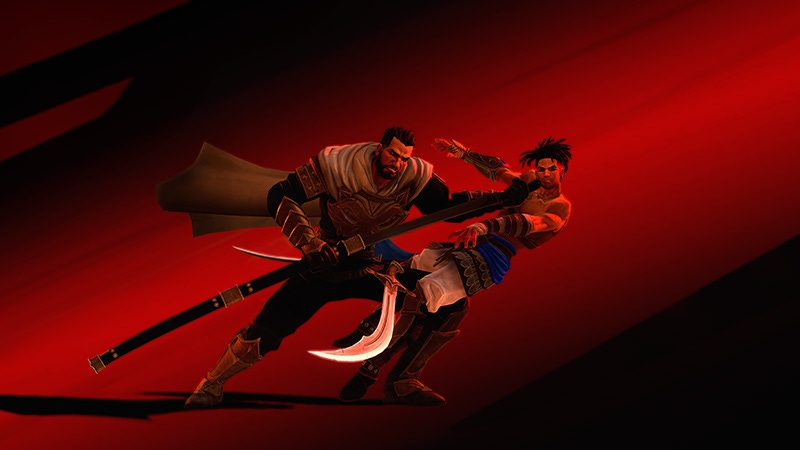Prince of Persia: The Lost Crown makes neat use of mocap tech
Even a 2D metroidvania game like Ubisoft's Prince of Persia: The Lost Crown can benefit by putting motion capture performers on a soundstage.

Ubisoft's Prince of Persia: The Lost Crown hits store shelves today, and it's the first game bearing the Prince of Persia name since 2008. Its Montpelier-based branch took a new direction for the platforming adventure series, mixing the linear sidescrolling 2D structure of the original games with an explorable world like the kind seen in Nintendo's recently-released Metroid Dread.
The new game also has a fresh, colorful aesthetic, far removed from the washed-out desert looks of the 2000s run. It's colorful, over-the-top, and pays tribute to Iranian culture and history. In an interview with Game Developer, cinematic director Joseph-Antoine Clavet explained that the studio learned into the series' time travel bona fides to build a game world that could be inspired by the vast history of what was once called Persia.
The historical visual influences get a modern touch-up with inspiration from Sony's film Spider-Man: Into the Spider-Verse and various types of Shonen anime. It was here that Clavet shared a rather neat technical fact: that Ubisoft built many of the game's animations not just through 3D animation, but also with the help of motion capture technicians.
That's not something we usually see with sidescrolling games, as the player is mostly viewing characters from a distance and from the side—but from Clavet's explanation, it went a long way to making the warrior hero Sargon into a stylish swordslinger, and provided a necessary contrast to fill out the game's visuals.
Motion capture and anime underline Prince of Persia's cinematics
The goal, Clavet said, was to make a game that felt like a "legend," something inspired by history but not bound by it. It's maybe the most fantastical game in the series, which is saying something when you look back at how otherworldly the last four games in the series could become.
Sargon and his fellow Immortals (essentially superheroes in this fictional version of the world) plow through entire armies in cinematics and leap from wall to wall like characters from My Hero Academia. To balance this look in animation, Ubisoft used what Clavet called a "hybrid" technique.
"We went on the mocap floor and blocked the scene with stuntmen and actors," Clavet explained. "In the more 'human' moments, we wanted to have the stability of mocap and...the motion and weight of the [the characters'] walk."
Even big fights that seem like they'd only be feasible in traditional keyframe-based animation could be blocked this way. What that allowed for, Clavet said, was for the animators to get good data on the "golden poses" the characters would fall into. Then they would characters in the cutscenes move quickly from pose to pose with stunts more focused on individual strikes than realistic dueling or fisticuffs.
The process described by Clavet seems to be another indicator that the costs of high-quality motion capture data are becoming more accessible to developers of all shapes and sizes. Last year we learned about how Ascendant Studios used a surprisingly low-cost set of tools for making Immortals of Aveum. Now Ubisoft is using the technology for lower-budget sidescrolling games.
About the Author(s)
You May Also Like









